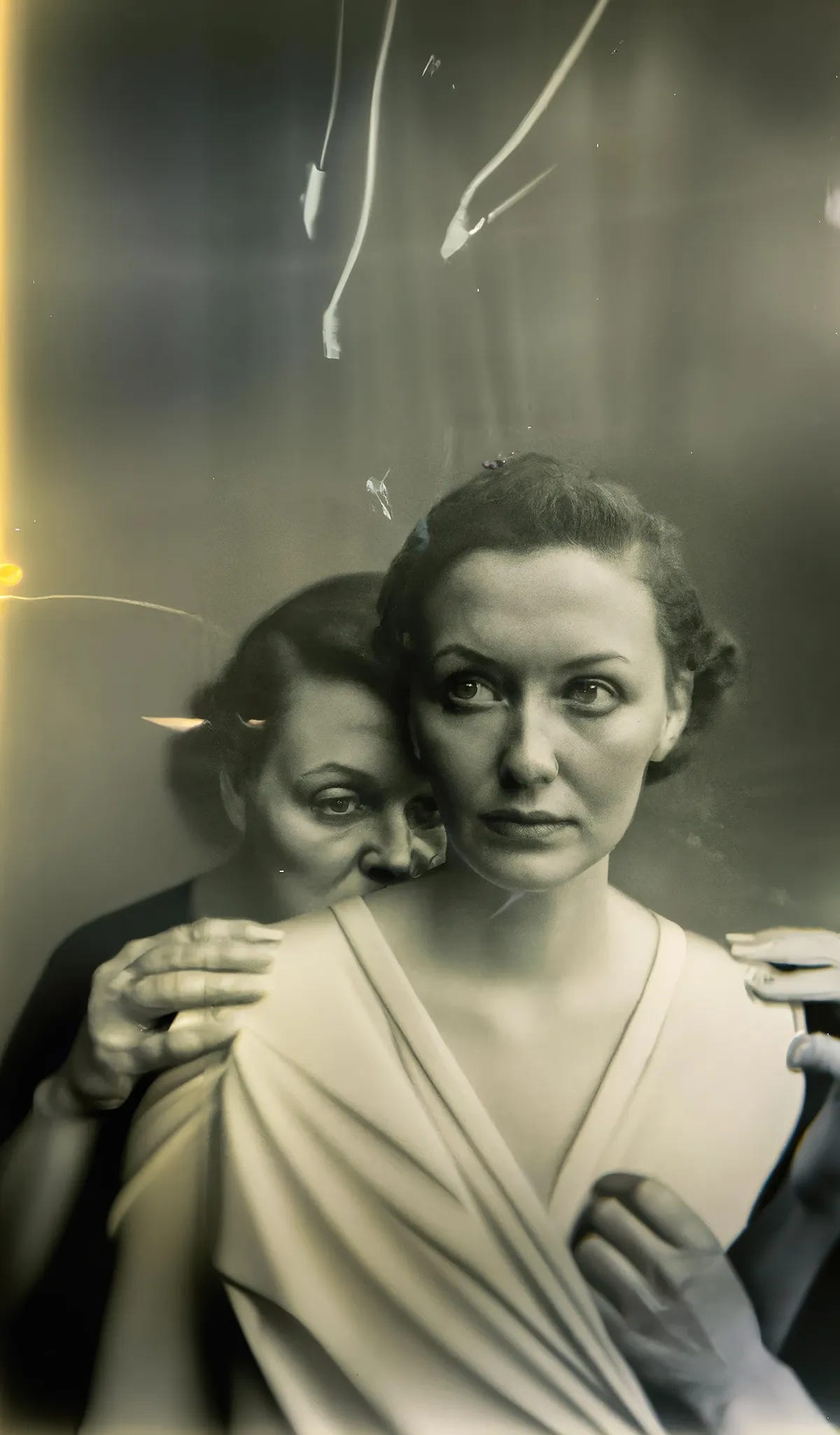I started this Substack almost one year ago because I'm very interested in the process of photography. The motto is:
Photographs are made in darkrooms. Whether analogue or digital, the captured image becomes visible. But first a photograph is created in that other darkroom, your grey matter.
A lot has been written about the latest developments in AI lately. Whether it's about what ChatGPT can do (such as my conversation about copyright and the future of photography), or the extremely rapid improvements that are taking place in the images it generates. It is a matter of weeks for these exponential improvements to see the light of day.
Everyone has read the many news articles and blogs by now. For instance about Boris Eldagsen's AI image that won the Sony World Photography Award and how he did not accept the award because it was not a photograph but an image manipulated by AI.
Two fellow Substack writers have written interesting articles on this, such as Andy Adams of Flakphoto with this post It’s not photography or Alain Astruc of Seasons with the post Into uncanny valley part 1. Both worthwhile to read.
There was also a nice discussion last week on Notes about whether AI photography is photography or not. I have my own opinion on this.
What I think of Photography in general
Photography has been an art form for over a century, evolving with technology from black and white film to digital cameras. But with the rise of AI and machine learning, a new kind of photography has emerged - AI photography.
AI photography is the process of capturing, processing and enhancing images using AI algorithms. These algorithms can identify objects, enhance colors and even remove unwanted objects from a photo. AI photography can create images without the use of a camera, making it a controversial topic for some who argue that it's not "real" photography.
But what is "real" photography? Is it the act of capturing light with a camera and lens, or is it the art of composing an image? Photography is both a technical skill and an artistic expression. It is the combination of light, composition and subject matter that creates a photograph, and AI photography is no different.
The argument that AI photography isn't "real" photography because it doesn't involve light is flawed. While AI-generated images may not be captured with a camera, they are still composed and manipulated with software that uses algorithms to simulate lighting and other effects. In fact, some AI photography techniques, such as neural style transfer, which uses AI algorithms to transfer the style of one image to another, can create images that mimic the look of traditional film photography.
It's also worth noting that AI photography is not trying to replace traditional photography. Rather, it's a new tool in the photographer's toolbox, allowing them to experiment and push boundaries in ways that weren't possible before. AI algorithms can help photographers enhance their images in ways they may not have thought possible, allowing them to create more dynamic and creative compositions. I am actually experimenting with integrating AI into my own images in my current project. More on that in one of the next episodes.
Another advantage of AI photography is its accessibility. With the rise of smartphones and social media, anyone can be a photographer. But not everyone has access to expensive equipment or the technical skills required to create stunning images. AI photography tools are becoming more widely available, making it easier for anyone to create beautiful, professional-looking images.
In the end, what matters in photography, AI or traditional, is the emotional impact it has on the viewer. Whether it's a stunning landscape captured by a camera or a digitally enhanced portrait created by AI algorithms, what matters is the way it moves or touches people. It's the emotions it evokes that make it powerful and memorable. So rather than getting caught up in the technical details of how an image is created, we should focus on the art itself and the impact it has on us. After all, it's the image that matters, and that's what makes photography so powerful and important, no matter how it's made.
One more thing about copyright and ‘stolen images’
When writing about AI photography, one cannot avoid mentioning the fuss over the use of "stolen photos" in the algorithm. I strongly disagree.
Throughout our lives, we are inspired and influenced by all the things we see. All these images play a role when we search for a subject, decide on a composition and finally edit the image. Because the AI algorithm is fed by millions and millions of images, it plays a similar role. It is very difficult to say that an AI-generated image infringes the copyright of that one particular photographer. The pool from which the algorithm compiles the image is simply too large.
That’s it for this week.
Till next time,
Looking for inspiration?
Want to be inspired be something that is not photography but relates to it?
‘I began to realize that film sees the world differently than the human eye, and that sometimes those differences can make a photograph more powerful than what you actually observed.'
– Galen Rowell
Like it? There’s more. Actually 108 of them…







We should call it CGI, computer generated illustrations
It's a tough question. Personally, I think that the AI label ought to be confined to imagery created by AI. When it starts as a photo and AI tools are used upon it in a way directed by the photographer, then I think edited or retouched photo is a more appropriate label. That's more in line with the way that it has been defined in the past.